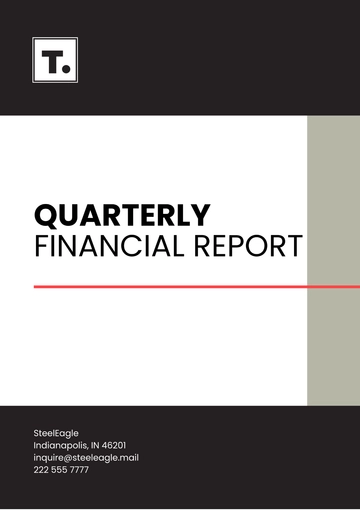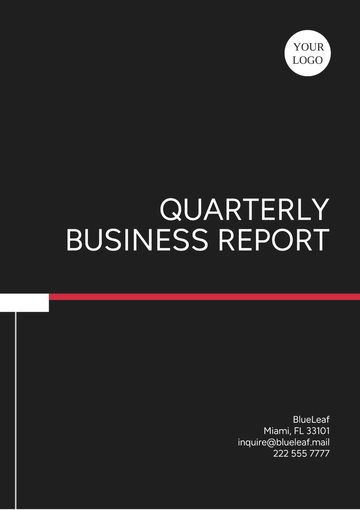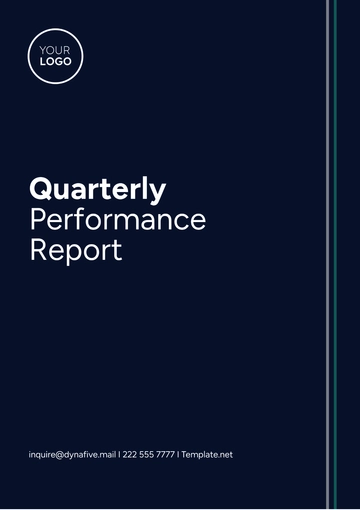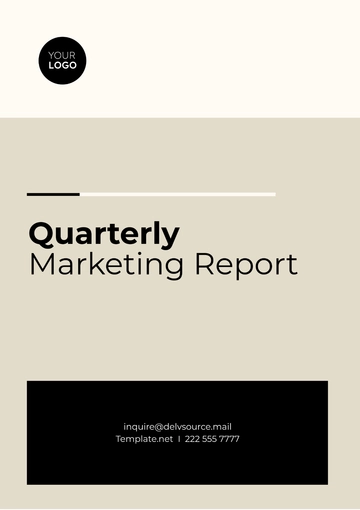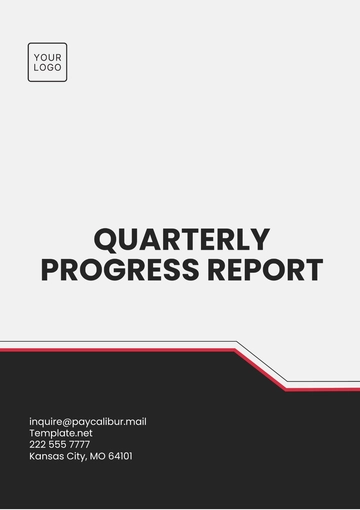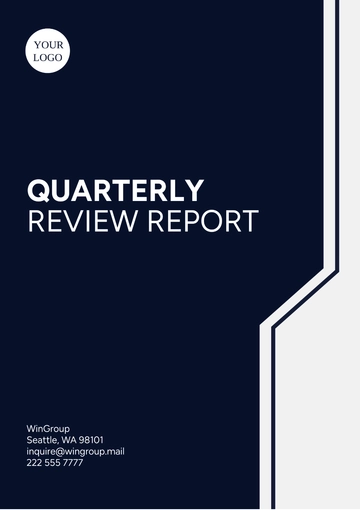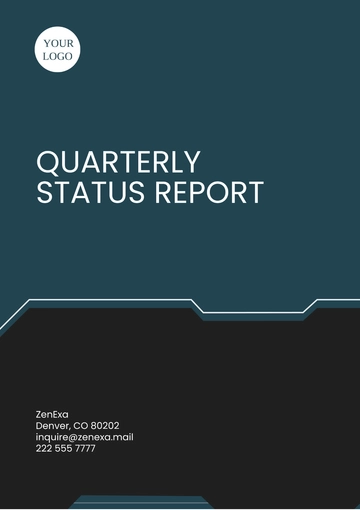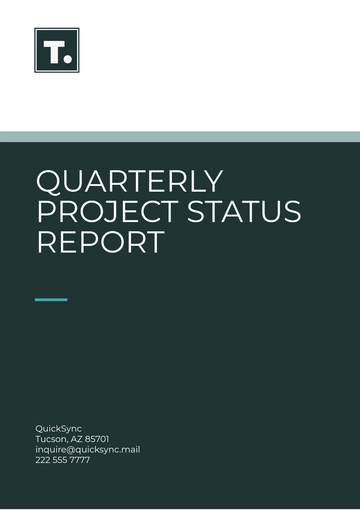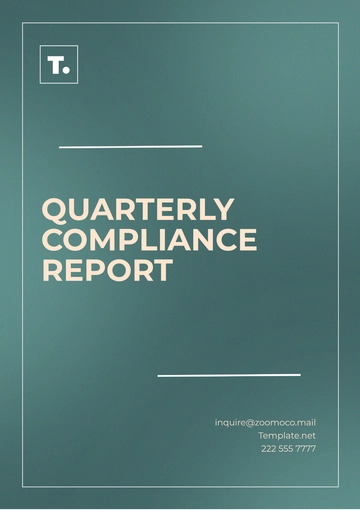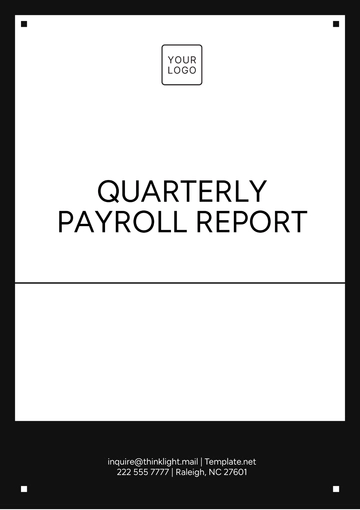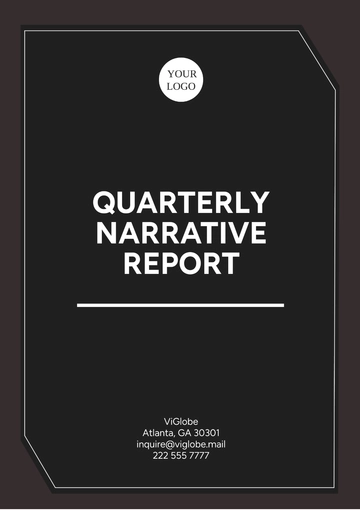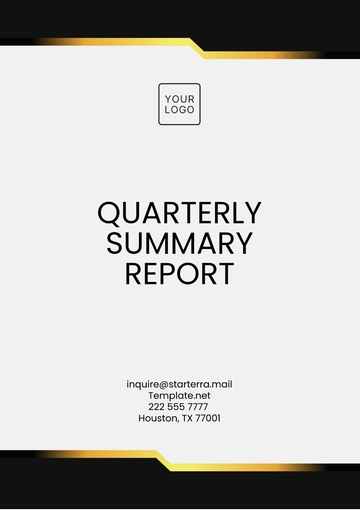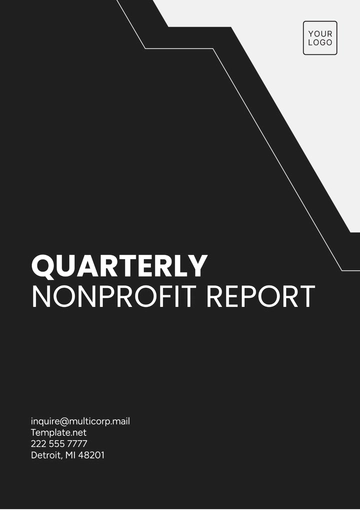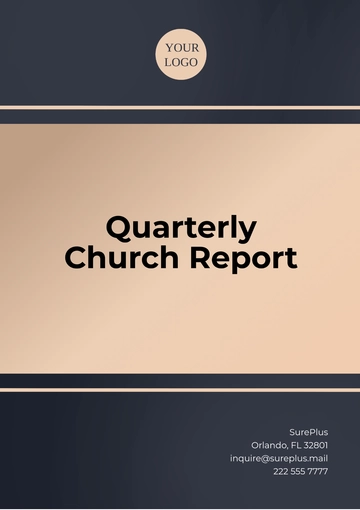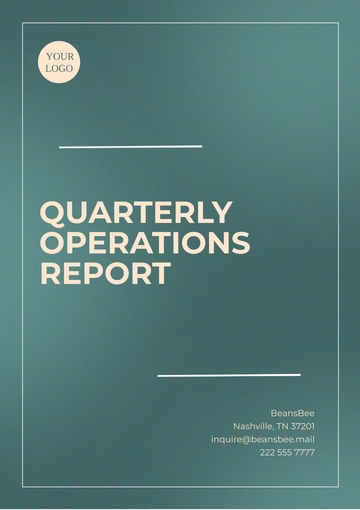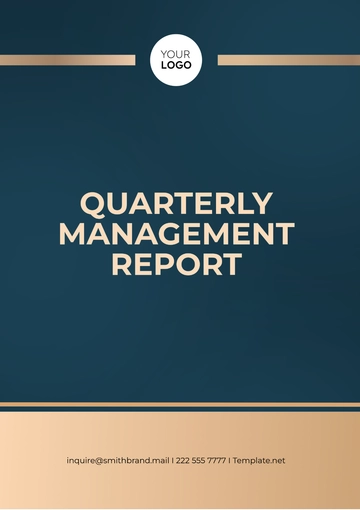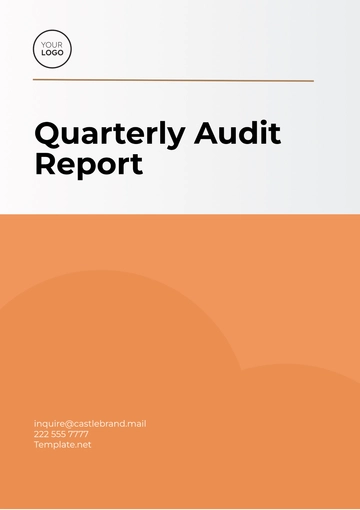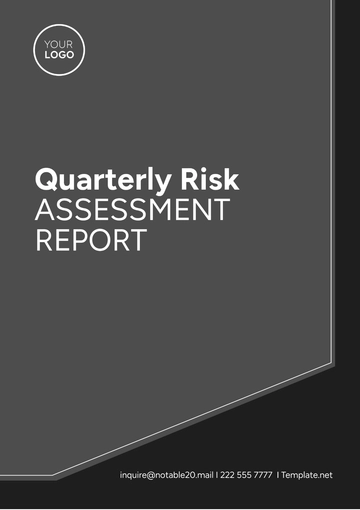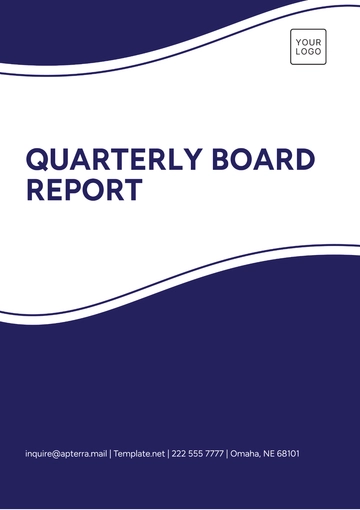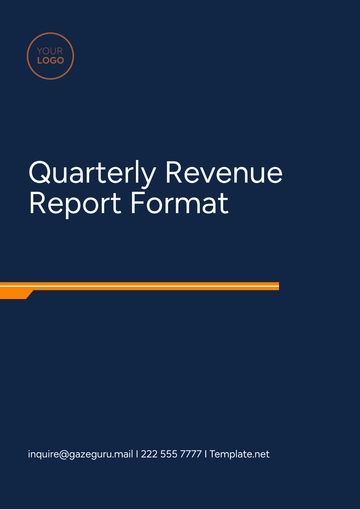Free Mortgage Quarterly Report
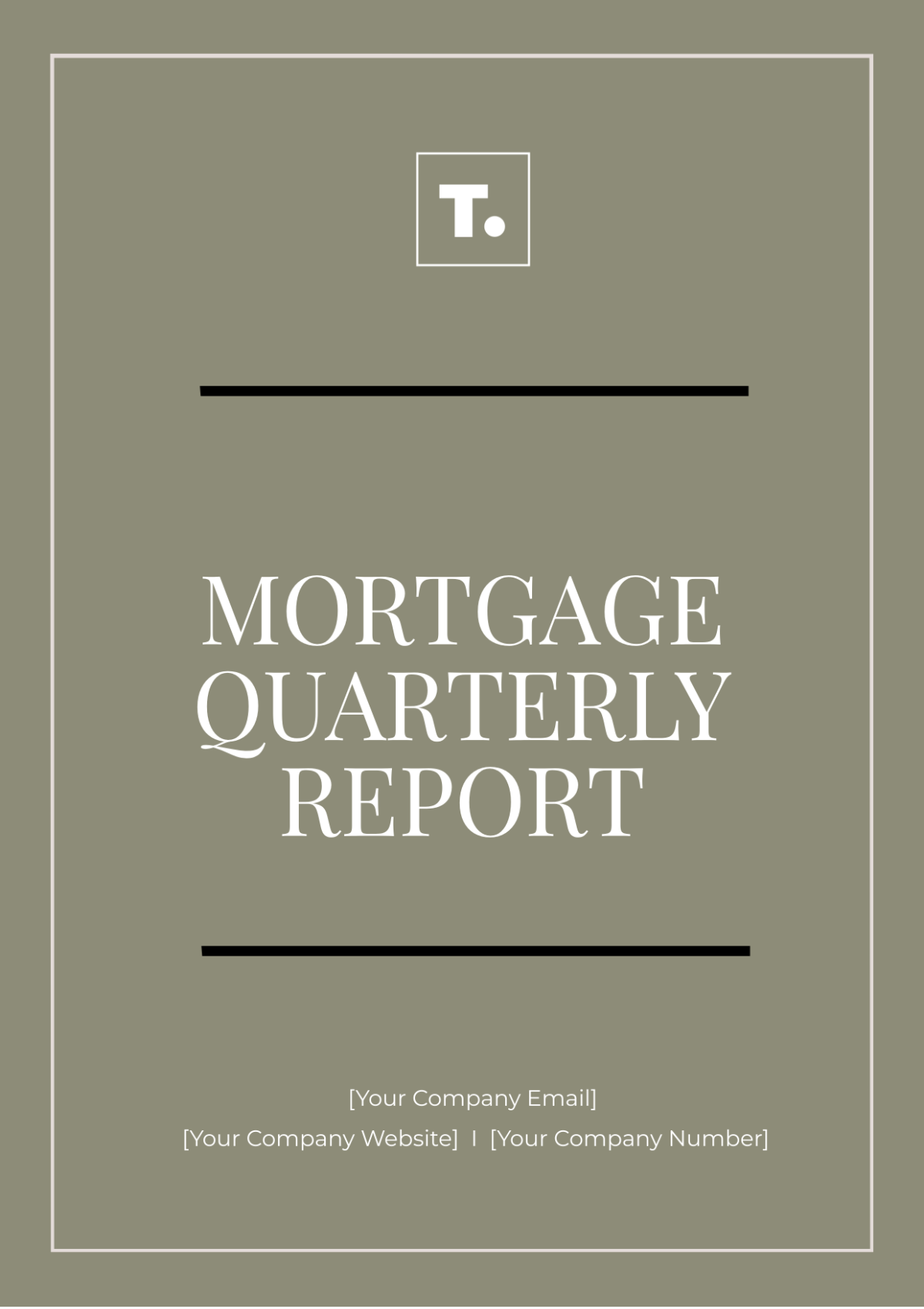
Prepared by: | [Your Name] |
Department: | Finance Department |
I. Executive Summary
In Q3 2051, Global Banking Solutions demonstrated resilient performance in mortgage lending despite a marginal increase in delinquency rates. Total mortgages issued decreased to 4,800 from 5,200 in Q2 2051, attributed to seasonal variations in home buying patterns. However, average loan sizes remained stable at approximately $245,000. Our commitment to stringent credit assessment and risk management practices mitigated the impact of economic fluctuations, resulting in a net income of $330,000 for the quarter.
II. Market Overview
II.I Mortgage Market Trends
Metric | Q1 2051 | Q2 2051 | Q3 2051 |
|---|---|---|---|
Total Mortgages Issued | 5,000 | 5,200 | 4,800 |
Average Loan Size ($) | 250,000 | 255,000 | 245,000 |
Delinquency Rate (%) | 2.1 | 1.9 | 2.5 |
Foreclosure Rate (%) | 0.5 | 0.4 | 0.6 |
Analysis: The decline in total mortgages issued reflects typical seasonal trends in the housing market during the third quarter. The stable average loan size indicates our strategic focus on catering to diverse borrower segments, including those seeking affordable housing solutions.
II.II Interest Rate Trends
Interest rates remained stable throughout Q3 2051, with a slight increase in long-term rates influencing refinancing activities while supporting mortgage demand for new home purchases.
Analysis: Stable interest rates provided a conducive borrowing environment, encouraging prospective homeowners to enter the market. The shift towards fixed-rate mortgage products over adjustable-rate options reflects borrower preference amidst prevailing economic conditions.
II.III Housing Market Dynamics
The housing market exhibited resilience, characterized by moderate growth in home prices and sustained demand in urban and suburban areas. Remote work policies continued to influence relocation trends, driving housing market activity.
Analysis: Urban and suburban housing markets demonstrated varied dynamics, influenced by evolving consumer preferences and economic stability. Moderate growth in home prices underscored market sustainability, bolstering mortgage lending opportunities.
III. Portfolio Performance
III.I Mortgage Portfolio Summary
Metric | Q1 2051 | Q2 2051 | Q3 2051 |
|---|---|---|---|
Number of Mortgages | 20,000 | 21,000 | 19,500 |
Total Portfolio Value ($) | 5,000,000 | 5,355,000 | 4,755,000 |
Average Interest Rate (%) | 3.5 | 3.4 | 3.6 |
Net Income ($) | 350,000 | 370,000 | 330,000 |
Analysis: Despite a decrease in the number of mortgages, the total portfolio value remained robust at $4.755 million, reflecting effective portfolio management strategies. The average interest rate of 3.6% in Q3 2051 contributed to a stable net income of $330,000, showcasing operational resilience amidst evolving market conditions.
III.II Loan Origination Trends
During Q3 2051, Global Banking Solutions concentrated on originating mortgages for first-time homebuyers, capturing 40% of new market entrants seeking affordable housing solutions. The average loan size slightly decreased to $245,000, reflecting market adjustments to enhance affordability.
Analysis: Our strategic emphasis on first-time homebuyers facilitated market penetration and customer acquisition, aligning with our commitment to promoting homeownership. The decrease in average loan size highlighted responsiveness to changing borrower preferences and economic dynamics affecting housing affordability.
III.III Credit Quality Analysis
Our credit quality remained robust, with a default rate of 2.0% in Q3 2051, aligning with industry benchmarks. Rigorous credit assessments and proactive customer support strategies minimized loan loss provisions to $55,000, ensuring sustainable portfolio performance.
Analysis: Maintaining a low default rate underscored prudent lending practices and a rigorous credit risk management framework. Proactive customer support initiatives and risk mitigation strategies effectively managed loan loss provisions, safeguarding asset quality and profitability.
IV. Interest Rate Analysis
IV.I Impact of Federal Reserve Policies
Federal Reserve policy adjustments in Q3 2051 influenced mortgage rates, contributing to a stable interest rate environment beneficial for borrowers and lenders alike.
Analysis: The Federal Reserve's policy decisions maintained stability in mortgage rates, supporting borrower affordability and stimulating housing market activity. Our strategic alignment of lending practices with Federal Reserve policies enhanced market competitiveness and responsiveness to economic conditions.
IV.II Borrower Interest Rate Trends
Borrowers benefited from competitive interest rates, resulting in increased refinancing activity despite higher long-term rates observed towards the end of the quarter.
Analysis: Competitive interest rates attracted borrowers seeking cost-effective refinancing opportunities, driving growth in mortgage refinance applications. Our responsiveness to borrower demand for refinancing solutions underscored commitment to meeting diverse financial needs while optimizing revenue through mortgage servicing activities.
IV.III Yield Curve Analysis
The yield curve flattened marginally in Q3 2051, influencing profitability margins on mortgage products. Strategic yield management strategies were implemented to optimize returns amidst evolving market conditions.
Analysis: The flattening yield curve necessitated proactive adjustment of pricing strategies to sustain profitability in mortgage lending operations. Our dynamic yield management approach effectively balanced risk and return considerations, mitigating the impact of interest rate fluctuations on earnings while preserving competitive advantages in the mortgage market.
V. Risk Assessment
V.I Credit Risk
Risk Factor | Q1 2051 | Q2 2051 | Q3 2051 |
|---|---|---|---|
Loan Default Rate (%) | 1.8 | 1.6 | 2.0 |
Loan Loss Provision ($) | 50,000 | 45,000 | 55,000 |
Analysis: The slight increase in the loan default rate to 2.0% in Q3 2051 highlighted the impact of economic uncertainties on borrower repayment capacities. Effective risk management practices and proactive loan loss provisioning strategies ensured adequate coverage against credit losses, safeguarding asset quality and financial stability.
V.II Market Risk
Market volatility remained moderate, influencing portfolio valuation and risk-adjusted returns. Dynamic hedging strategies mitigated adverse market movements, ensuring stable performance.
Analysis: Our robust market risk management framework facilitated proactive identification and mitigation of potential volatility impacts on mortgage portfolio valuations. Strategic deployment of hedging instruments and continuous monitoring of market conditions enhanced resilience against adverse fluctuations, supporting sustainable profitability and capital adequacy.
V.III Operational Risk
Operational efficiencies were enhanced through technological advancements and robust risk management frameworks, minimizing operational disruptions and improving service delivery.
Analysis: Investments in technology and operational capabilities bolstered resilience against operational risks, ensuring seamless mortgage servicing and customer satisfaction. Integration of advanced analytics and automation streamlined processes, optimizing resource utilization and reducing operational costs while enhancing service responsiveness and scalability.
VI. Regulatory Compliance
VI.I Regulatory Updates
In Q3 2051, Global Banking Solutions adhered to all regulatory requirements, including the implementation of updated lending guidelines and consumer protection measures.
VI.II Compliance Status
Internal audits confirmed full compliance with regulatory directives, with ongoing monitoring and remedial actions to address identified gaps.
VI.III Future Compliance Strategies
Looking ahead, Global Banking Solutions plans to enhance compliance monitoring systems and staff training initiatives to adapt to upcoming regulatory changes effectively.
VII. Recommendations
To mitigate concentration risk, Global Banking Solutions recommends diversifying the mortgage portfolio into emerging markets and offering specialized loan products tailored to diverse customer segments. Enhancing customer engagement through personalized financial counseling and digital mortgage services will strengthen relationships and loyalty, driving sustainable growth. Investing in advanced analytics and predictive modeling tools will fortify risk management capabilities, enabling proactive risk identification and mitigation strategies.
- 100% Customizable, free editor
- Access 1 Million+ Templates, photo’s & graphics
- Download or share as a template
- Click and replace photos, graphics, text, backgrounds
- Resize, crop, AI write & more
- Access advanced editor
Introducing the Mortgage Quarterly Report Template from Template.net, your go-to for professional and precise reporting. This fully customizable and editable template ensures a streamlined process, enhancing productivity and clarity. Effortlessly edit it in our AI Editor Tool to match your unique requirements, delivering comprehensive, tailored mortgage reports every quarter. Get started today with Template.net!
You may also like
- Sales Report
- Daily Report
- Project Report
- Business Report
- Weekly Report
- Incident Report
- Annual Report
- Report Layout
- Report Design
- Progress Report
- Marketing Report
- Company Report
- Monthly Report
- Audit Report
- Status Report
- School Report
- Reports Hr
- Management Report
- Project Status Report
- Handover Report
- Health And Safety Report
- Restaurant Report
- Construction Report
- Research Report
- Evaluation Report
- Investigation Report
- Employee Report
- Advertising Report
- Weekly Status Report
- Project Management Report
- Finance Report
- Service Report
- Technical Report
- Meeting Report
- Quarterly Report
- Inspection Report
- Medical Report
- Test Report
- Summary Report
- Inventory Report
- Valuation Report
- Operations Report
- Payroll Report
- Training Report
- Job Report
- Case Report
- Performance Report
- Board Report
- Internal Audit Report
- Student Report
- Monthly Management Report
- Small Business Report
- Accident Report
- Call Center Report
- Activity Report
- IT and Software Report
- Internship Report
- Visit Report
- Product Report
- Book Report
- Property Report
- Recruitment Report
- University Report
- Event Report
- SEO Report
- Conference Report
- Narrative Report
- Nursing Home Report
- Preschool Report
- Call Report
- Customer Report
- Employee Incident Report
- Accomplishment Report
- Social Media Report
- Work From Home Report
- Security Report
- Damage Report
- Quality Report
- Internal Report
- Nurse Report
- Real Estate Report
- Hotel Report
- Equipment Report
- Credit Report
- Field Report
- Non Profit Report
- Maintenance Report
- News Report
- Survey Report
- Executive Report
- Law Firm Report
- Advertising Agency Report
- Interior Design Report
- Travel Agency Report
- Stock Report
- Salon Report
- Bug Report
- Workplace Report
- Action Report
- Investor Report
- Cleaning Services Report
- Consulting Report
- Freelancer Report
- Site Visit Report
- Trip Report
- Classroom Observation Report
- Vehicle Report
- Final Report
- Software Report

